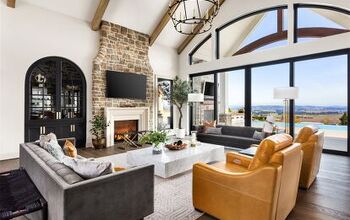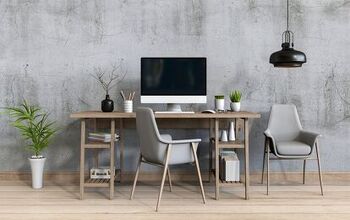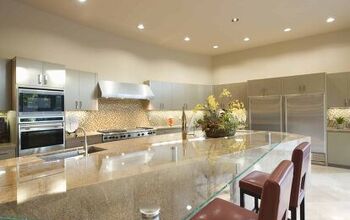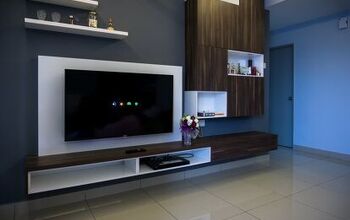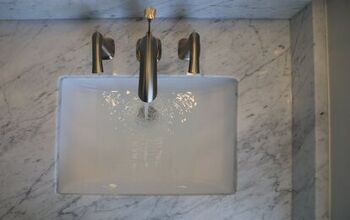Design Your Home For How You Want To Feel, Not Just How It Looks

Imagine spending a bunch of time and money on creating a beautiful home that rivals the designer spaces you see on TikTok. Everything looks amazing, so why do you find every excuse possible to stay out of the house? You’ve likely paid more attention to how your space looks, resulting in a house that doesn’t really feel like a home.
Think about how you want your home to make you feel, and use that as your design guide. Choose colors, patterns, textures, fragrances, and items that support the overall mood you desire. It’s okay to design for different emotions in different rooms, but always make sure your choices work well with your lifestyle and how you use your home.
Great design calls for a balance between form and function. However, there’s another part of the equation that needs attention, and that’s feeling.
A well-designed space should intentionally evoke emotions. For example, a successful gym energizes you, and a spa relaxes you. Likewise, your home should welcome you with open arms and make you feel completely comfortable.
Ask Yourself, “How Do I Want to Feel When I’m At Home?”
Before you start picking out paint and buying furniture, think about how you want to feel when you’re at home. What’s the vibe you’re going for when you return home after a busy day at work or a long vacation?
Overall, you likely want to feel comfortable and at ease in your house. You can sit anywhere, wear anything, and walk around barefoot without a second thought.
However, it’s also a good idea to be a bit more detailed with how you want to feel, depending on the room. For example, you might want to feel relaxed and calm in your bedroom but inspired and upbeat in your home office.
You also likely have different emotional needs during the day than you do at night. Feeling relaxed at night is great, but in the morning, you need to feel energized so you can start your day.
Let Your Feelings Guide Your Home’s Design
After thinking about how you want to feel, take notes about what you discover. Write down the overall mood you want your house to convey and the specific feelings you’re going for in each room.
Keep these notes front-and-center with your design book. It should be the first thing you see as you start to peruse samples and swatches, inspiration photos, and sketches. Your feelings are your guide, so every choice you make for your home should support the desired mood.
For example, if you’re dreaming of a spa-like, calm bedroom, then you may gravitate toward soft blues, cozy fabrics, and warm lighting. For your office, you might lean more toward contrasting colors and bold art that inspires you and sparks energy.
Assess How Your Current Design Makes You Feel
Now that you know how you want your home to make you feel, walk through and pay attention to how it actually feels. You may not realize it until you intentionally think about it, but your home is already putting you in some sort of mood.
Unfortunately, in many cases, it’s not the mood you want to be in, but that’s okay, because you’re going to fix it. Step into your kitchen and note your initial reaction to the space. Do the same with your living room, entryway, bathrooms, etc.
Take notes, comparing the feelings you get with the ones you were hoping for to find any discrepancies. When you find contradictions, try to pinpoint the cause. It could be the lighting, the layout, a weird smell, or the color choices.
This exercise not only helps you learn where to concentrate your efforts, but it’s also a great way to sharpen your skills. You get a better understanding of how design affects emotions, so you know what elements you need to change.
Six Tips For Designing A Home That Feels Right For You
You’ve done your homework. You know how you want your home to make you feel, and you also know how you actually feel when you’re in it. You’ve narrowed down the problem spots, or perhaps you’ve decided to overhaul everything.
Whether you’re doing one room or the whole house, these tips can help you create a home that feels like it’s all yours.
1. Consider Color Psychology
Color directly affects your mood, and many designers consider color psychology when they’re planning spaces. Therefore, once you know the feeling you’re trying to achieve, research the colors that are associated with that mood.
For example, blue often goes with calm, yellow represents joy, green tends to soothe, and red is stimulating. Pairing your colors of choice with neutrals can balance things out and help ground the space.
However, don’t just pick a color because a book tells you it makes you feel a certain way. You need to actually see the color and interact with it to see how it affects you.
Color psychology is a great starting point, but it isn’t one-size-fits-all. You may have personal associations with certain colors that make you feel entirely different. Therefore, listen to yourself when you’re selecting colors, and go with what makes you feel good.
2. Design To Fit Your Lifestyle
There’s nothing wrong with finding inspiration for your home in design magazines or Pinterest boards. But avoid copy-and-pasting a design simply because you love how it looks.
When you apply the look to your space, it might not support how you actually live or want to feel. Therefore, be inspired, but don’t feel as if you have to do everything the same.
Consider your daily routines and habits, and design accordingly. Do you prefer to wind down after work or recharge for a night out on the town? Do you need a calm, peaceful atmosphere when you wake up, or do you yearn for uplifting, energetic mornings?
Assess how the layout of your furniture affects your daily life. If you love to enjoy conversations in the evening, is the seating set up in a way that facilitates that?
Is your kitchen command central, with homework, cooking, and entertaining going on all at once? If so, make sure it’s easy to maneuver around the space and still have enough spots for everyone to do their thing.
3. Involve All Of Your Senses
Just like the title of this article says, don’t design just for looks. That means design for all of your senses, including sounds, smells, and feelings.
Texture adds richness and comfort to your space. Think about things like plush rugs, natural fibers, wood grain, buttery soft throws, and velvety curtains. Layer various textures to add depth and warmth to your home.
Scent is a powerful mood trigger. The faintest hint of a fragrance can take you back to the past and stir up memories from decades ago. Certain smells also often make you feel specific ways.
Therefore, if you want a room to feel cozy, think about what aromas make you feel that way and incorporate those smells using candles, diffusers, and even fresh herbs. It doesn’t have to be strong; keep it subtle, and you’ll feel the difference.
Sound is another way to enhance the mood of a space. An indoor water feature can help add a sense of serenity. Music affects how you feel, whether you play soft classical or upbeat rock.
4. Declutter Anything That Doesn’t Fit The Feeling
Clutter can become a security blanket for some people, but overall, it drags down your mood. Even if you think it’s doing you a favor, it’s more likely to stress you out and overwhelm your senses.
Commit to decluttering and approach it from a new perspective. Instead of thinking about whether or not you use an item, ask yourself if it makes you feel how you want to feel. If not, then it goes.
5. Incorporate Personal Pieces
Spend too much time watching HGTV or YouTube designers, and you’ll start thinking everything personal in your home needs to go. That’s because a lot of these shows are geared toward people who are thinking about future resale or selling their homes.
In these situations, it’s often recommended to depersonalize your space so more buyers can picture themselves living there. But when you’re living in your home, you should absolutely have things that mean something to you out in the open.
Family photographs, your grandmother’s porcelain candy dish, and your dad’s stamp collection are all eligible decor. But only if they make you feel how you want to feel in the space.
Personal items connect you to your home. They tell your story, and they add an interesting quality to your space that sets it apart from others.
6. It’s Okay If Things Change
The final tip for designing your home for how you want to feel is that it’s okay if you want to change it over time. It’s highly unlikely that you go through life feeling the same every day. Therefore, as your emotions evolve, your home should change, too.
For example, if you have a new baby, you may prefer a calmer environment. But if you’re aspiring to grow in your career and chasing a promotion, you might need a more energizing ambiance to pump up your productivity and creativity.
So feel free to rearrange, repaint, swap out decor, and flip rooms. After all, it’s your home, so it gets to transform as you move through different seasons of life.
Does Your House Feel Like Your Home?
It’s natural to want a beautiful home, but don’t focus all your effort on looks. Design your space around emotion instead of aesthetics, resisting the temptation to blindly chase trends.
You’ll discover a home that you love. Your home will be the ideal backdrop for your life, supporting you in all you do and making you feel that you’re right where you belong.
Related Guides:
- What NOT To Do When Decluttering
- Why It’s Worth Mixing Vintage And Modern Styles In Home Design
- How To Choose The Right Color Scheme For Your Home

Stacy Randall is a wife, mother, and freelance writer from NOLA that has always had a love for DIY projects, home organization, and making spaces beautiful. Together with her husband, she has been spending the last several years lovingly renovating her grandparent's former home, making it their own and learning a lot about life along the way.
More by Stacy Randall










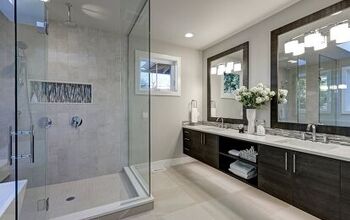

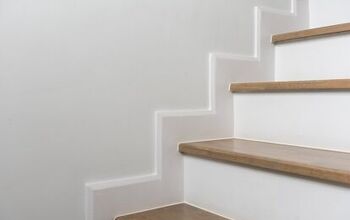
![10 Best Scroll Saws for 2022 [Ultimate Reviews & Buyer's Guide]](https://cdn-fastly.upgradedhome.com/media/2023/07/31/9070684/10-best-scroll-saws-for-2022-ultimate-reviews-buyer-s-guide.jpg?size=350x220)
